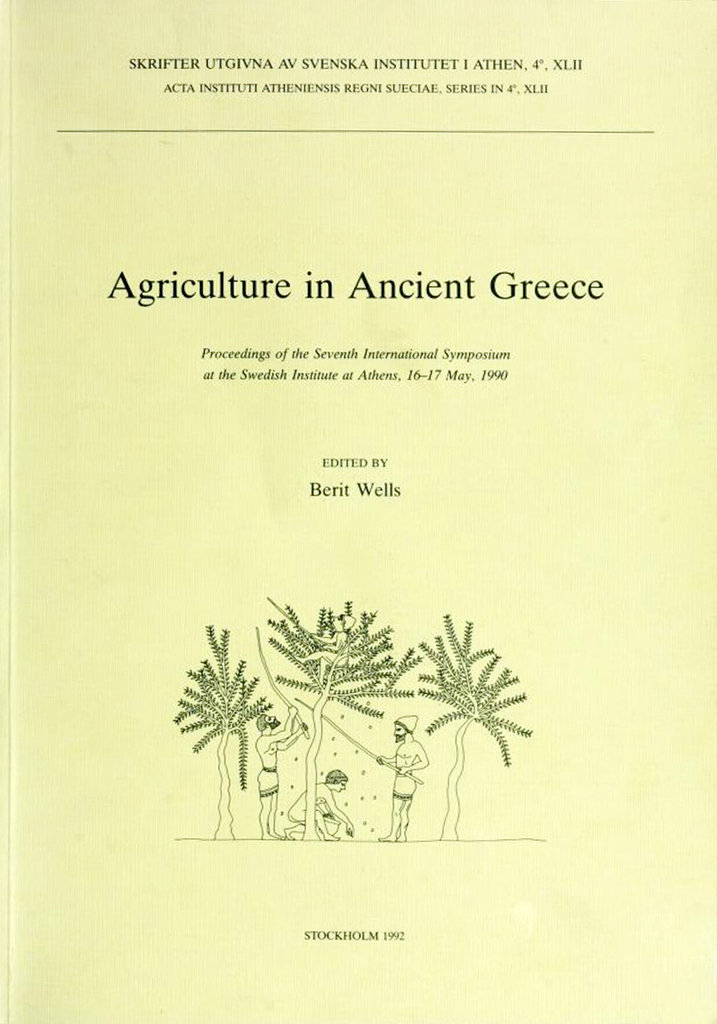Opuscula 7 (2014) is now available for purchase and free download at Bokorder.se. Also available at Amazon.com, Amazon.de, Bokus.com and Adlibris.com. Castration, cult and agriculture. Perspectives on Greek animal sacrifice By Gunnel Ekroth Abstract The castration of most male animals seems to have been the rule in ancient Greece when rearing cattle, sheep, goats, and pigs; only very few adult males are needed for breeding purposes and flocks of bulls, rams, billy-goats and boars are difficult to keep, since they are too aggressive. Castrated males yield more and fattier meat, and, in the case of sheep, more wool. Still, sacred laws and sacrificial calendars stipulate the sacrifice of uncastrated victims, and vase-paintings frequently represent bulls, rams and billy-goats in ritual contexts. This paper will discuss the role of uncastrated male animals in Greek cult in the Archaic, Classical and Hellenistic periods, both from a religious and an agricultural perspective. Of particular interest are the relations between the practical, economic reality and the theological perception of sacrifice. These issues will be explored using epigraphical, literary, iconographical and zooarchaeological evidence. Bibliographical information Gunnel Ekroth, ‘Cult, castration and agriculture. Perspectives on Greek animal sacrifice’, Opuscula. Annual of the Swedish Institutes at Athens and…
Distributed by Astrom Editions. Agriculture in ancient Greece. Proceedings of the Seventh International Symposium at the Swedish Institute at Athens, 16–17 May 1990 Edited by Berit Wells These fourteen papers on ancient Greek agriculture were read, or emanated from the discussions during, an international conference in Athens; the papers are followed by transcripts of the discussions of the symposium. Two main themes are addressed: (1) production—how do we recognize a farm and what could be, and what was, produced on it? (2) and the organization of agriculture—who owned the land, who worked it and how, and how much did it yield? Contents Preface Jens Erik Skydsgaard | Agriculture in ancient Greece. On the nature of the sources and the problems of their interpretation (pp. 9–12) Eberhard Zangger | Prehistoric and historic soils in Greece: Assessing the natural resources for agriculture (pp. 13–18) Robin Osborne | ‘Is it a farm?’ The definition of agricultural sites and settlements in ancient Greece (pp. 21–25) Hans Lohmann | Agriculture and country life in Classical Attica (pp. 29–57) Discussion after first section on production Anaya Sarpaki | The Paleoethnobotanical approach. The Mediterranean triad or is it a quartet? (pp. 61–75) Marie-Claire Amouretti | Oléiculture et…
Published by the Swedish Institute of Classical Studies in Rome. Distributed by Astrom Editions. Arte militare e architettura nuragica. Nuragic architecture in its military, territorial and socio-economic context. Proceedings of the First International Colloquium on Nuragic Architecture at the Swedish Institute in Rome, 7–9 December, 1989 Edited by Barbro Santillo Frizell Twelve papers given at the first international colloquium on the function of the Sardinian nuraghi held at the Swedish Institute in Rome dealing with, in particular, the military function of the nuraghi in relation to tactics and strategy, their territorial distribution and spatial patterning; models for the interpretations of the social and economic development in nuragic society; the social significance of the nuraghi; and the art of warfare from the evidence of related finds. Contents Barbro Santillo Frizell, ‘Introduzione’, 7–12 Barbro Santillo Frizell, ‘Introduction’, 13–18 Miriam Balmuth, ‘Nuragic camouflage’, 19–22 Paola Basoli & Alba Foschi Nieddu, ‘Il sistema insediativo nuragico nel Monte Acuto: analisi preliminare dei fattori geomorfologici e socio-economici’, 23–40 Lucia Manca Demurtas & Sebastiano Demurtas, ‘Analisi dei protonuraghi nella Sardegna centro-occidentale’, 41–52 Stephen L. Dyson & Robert J. Rowland Jr, ‘Continuity and change in Roman rural Sardinia: The Maryland-Wesleyan survey’, 53–63 Leonore Gallini, ‘Architectural evidence for the…



